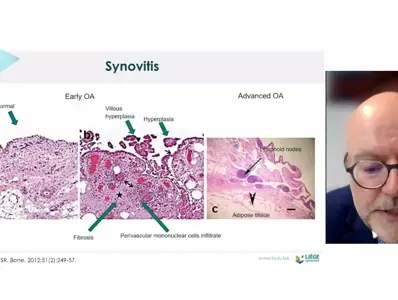Osteoarthritis: Current Insights and Management Options
The first presenter, Prof. Henrotin, emphasized his mission to convince that the previous understanding of Osteoarthritis as a progressive wear-and-tear of cartilage due to ageing and an excess of mechanical stress has evolved to a complex disease process involving all tissues, inflammatory pathways and the immune system. Different pheno- and endotypes exist, classified by specific molecular pathways. The current understanding of Osteoarthritis should always be holistic taking into account the disease, biological and psycho-social factors and comorbidities. Prof. Cooper led in the second part through the different guideline recommendations. Concentrating on recent data on the use of paracetamol and the applicability and safety of oral NSAIDs, he summarized that there are quite similar AEs observed with paracetamol at standard doses and those with NSAIDs including an increasing incidence of mortality, and that all these drugs should be used judiciously in Osteoarthritis. Amongst other options, a combination with the two enzymes bromelain, trypsin and the flavonoid rutoside (a quercetin agent) has anti-inflammatory and senolytic potential.
If you liked this post you may also like

